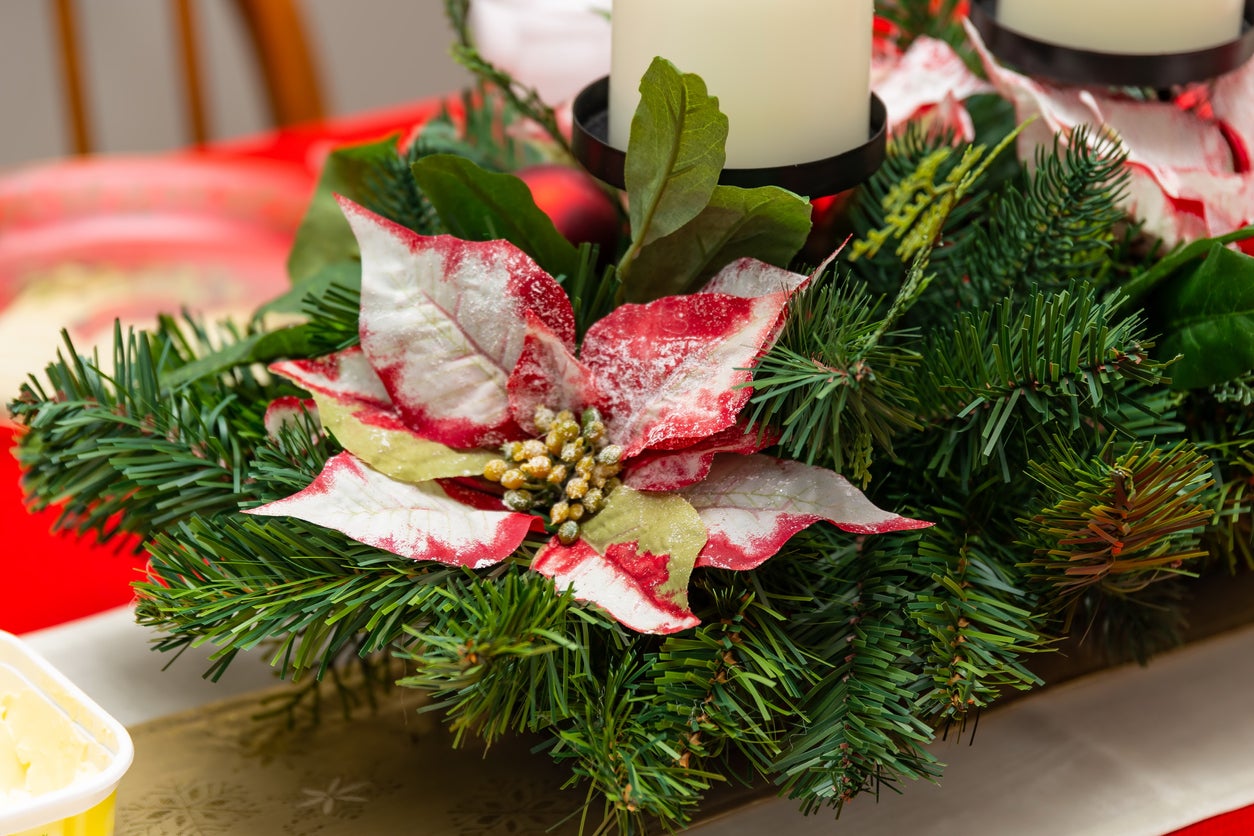Christmas Centerpiece Ideas – Growing Plants For A Christmas Centerpiece


Would you like a different look for this year's holiday floral centerpiece? Traditional plants for a Christmas centerpiece include pine boughs, pine cones, holly, and poinsettias. But if these choices of plants for Christmas table arrangements leave you feeling bah humbug, maybe it's time to think outside of the “flower” box!
Red and Green Centerpiece Plant Arrangements
Changing up the plants for Christmas table arrangements doesn't necessarily mean ditching that traditional red and green centerpiece. Plant arrangements for that special holiday floral centerpiece can include some not-so-traditional reds and greens:
- Roses – Rose, the flower of love, beautifully expresses the romance of the Christmas season. Use solid, red roses accented with greenery for an elegant look or arrange white roses with red tips in a decorative sleigh to create that wintry feel.
- Ranunculus flowers – Ranunculus are popular vase flowers that can last for days if cut before they are fully open. Use a bright red variety for vibrant color, incorporate pine branches from the backyard, and tie it all together with festive ribbon.
- Freesia – This South African symbol of friendship lasts for weeks if cut in the bud stage. The delicate, red flowers are often highlighted with golden centers for an added splash of color. Use freesias in a centerpiece with gold candlesticks for a complimentary color scheme.
- Carnations – Readily available year-round and budget-friendly, choose long-stemmed, dark red carnations for the foundation flower and highlight with eucalyptus greenery and red berries.
- Tulips – Create a chic look by incorporating these spring blooms in your wintry bouquet. Force your own tulip bulbs for a tulips-only arrangement or accent store-bought, red tulips with Christmas greenery.
- Hawthorn berries – These dark red berries can be safely used around kids and pets as a replacement for poisonous holly berries. Although Hawthorn berries are edible, like apples, their seeds contain a cyanide compound and shouldn't be consumed.
- Hydrangeas – Their large clusters of petals make hydrangeas well suited for flower arranging in any season. Try the Antique Green variety for a mix of deep pinks and delicate greens in your holiday floral centerpiece. Properly cured, hydrangeas are long lasting in dried arrangements.
- Spruce, arborvitae and cypress – Don't be afraid to scrap the pine and substitute backyard boughs from any of the other types of evergreens in your Christmas centerpiece. Plant arrangements will benefit from the added textures that pine lacks, such as spruce, arborvitae, and cypress.
White and Silver Christmas Centerpiece Ideas
Substitute those red roses, carnations, or tulips with white flowers. Then round out the arrangement with silvery-green foliage to add that air of elegance to the holiday dinner table. Wondering where to find that foliage? Try looking in the house or backyard:
- Succulents – The lighter, silvery green of many succulents provides the perfect accent to the white and silver holiday floral centerpiece. Many varieties of sedum can be propagated by snipping off the tips and planting in soil. In colder climates, bring clippings inside for holiday use or gather up a few hens and chicks plants for a mix of live and cut plants for Christmas table arrangements. As an alternative, try spicing up existing indoor cacti by adding small blue ornaments, silver bells, and holiday ribbon.
- Blue spruce – The blue needled species of spruce impart a silvery blue cast which perfectly accents white foundation flowers. Be sure to cut the latest season's growth for the bluest shades.
- Eucalyptus – Grow this Australian native in your garden or as a container plant and use its fragrant leaves in both fresh and dried arrangements.
- Dusty miller – The quintessential silver-leafed plants, dusty miller leaves can be used fresh or dried in arrangements. If dried properly, they can retain their color for several years.
Sign up for the Gardening Know How newsletter today and receive a free copy of our e-book "How to Grow Delicious Tomatoes".

Laura Miller has been gardening all her life. Holding a degree in Biology, Nutrition, and Agriculture, Laura's area of expertise is vegetables, herbs, and all things edible. She lives in Ohio.